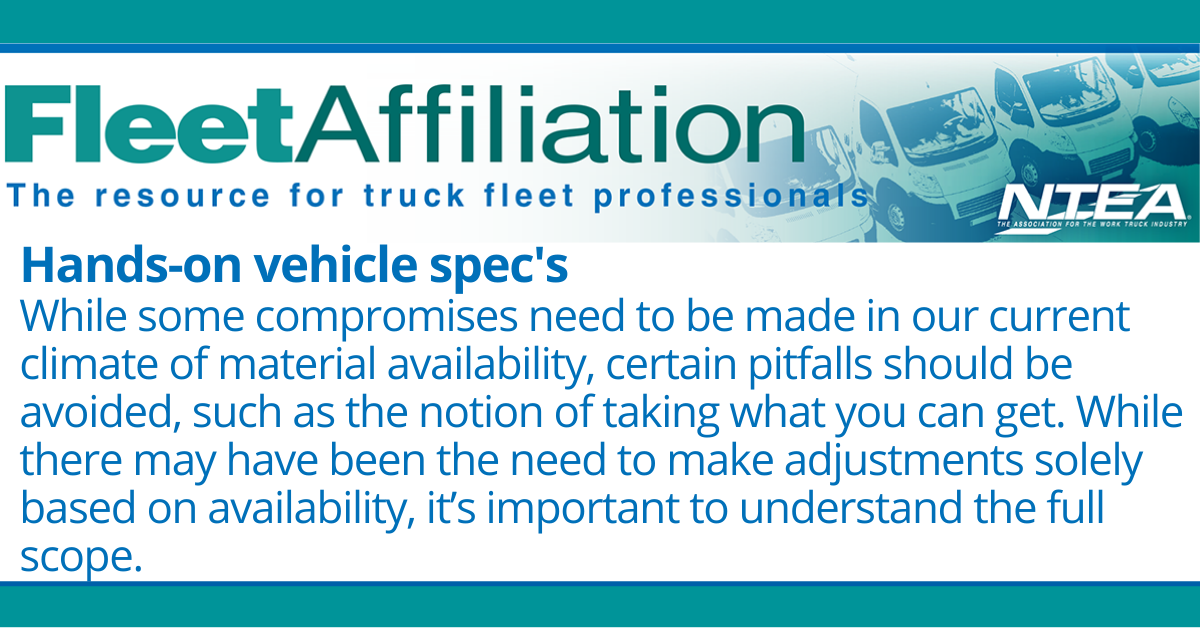
Published in June 2023 Fleet Affiliation.
While vehicle spec’ing has changed over the last couple of years — partly due to availability, allocation, production delays and other uncontrollable factors — several core elements should always be considered. Fleet leaders should always be involved in the vehicle design, regardless of whether the organization already has a design process team. Because those who are part of the day-to-day operation are best positioned to know about the work to be performed by the vehicles and equipment, their design input can be extremely valuable to decisionmaking.
Vehicle design hierarchy
While there are exceptions to almost every situation, especially with the current state of material availability, there is a hierarchy to vehicle design. Commercial vehicles are generally not mass-produced; they are designed for a task.
- As a first line of action, you might work with a commercial vehicle dealer to order trucks that meet your specific needs. Although the dealer representatives may have taken the time to understand your operation, they will likely work with the equipment and upfitters they already know.
- Another option is to connect with the upfitters that will serve as final-stage manufacturers. These professionals understand the equipment that will be added to a chassis and may be able to assist with the vehicle specification process.
- Finally, if your fleet has the internal knowledge and skills, there may be a benefit to designing the complete unit in-house. It’s important to note that vehicles may still be acquired through a dealer and upfitter, and they may provide additional input and suggestions, but those will be based on internal operational requirements. As stated above, your internal fleet professionals should be in the best position to know what work is needed to get the job done.
Understanding the “why”
Unless by chance there is an on-the-lot vehicle that meets your needs, taking the opportunity to be involved in the specification development process is imperative. During the process, working with a cross-functional team will streamline many of the steps. End users provide critical input and have their boots on the ground, vehicle technicians can speak to maintainability, and management needs to understand the “why”. In the end, positioning the fleet manager or fleet purchaser as part of the decisionmaking process is critical to ensuring you obtain the most efficient commercial vehicles for the operation.
The bottom line
While some compromises need to be made in our current climate of material availability, certain pitfalls should be avoided, such as the notion of taking what you can get. While there may have been the need to make adjustments solely based on availability, it’s important to understand the full scope. These vehicles are often designed to carry longer life cycles than mass-produced vehicles, and taking the time to design and possibly experience a longer delivery date may be beneficial in the long run.
In the end, the fleet manager or professional in charge of the fleet should be in the driver’s seat when it comes to vehicle design. This can help ensure the best possible outcome when all factors are considered.
